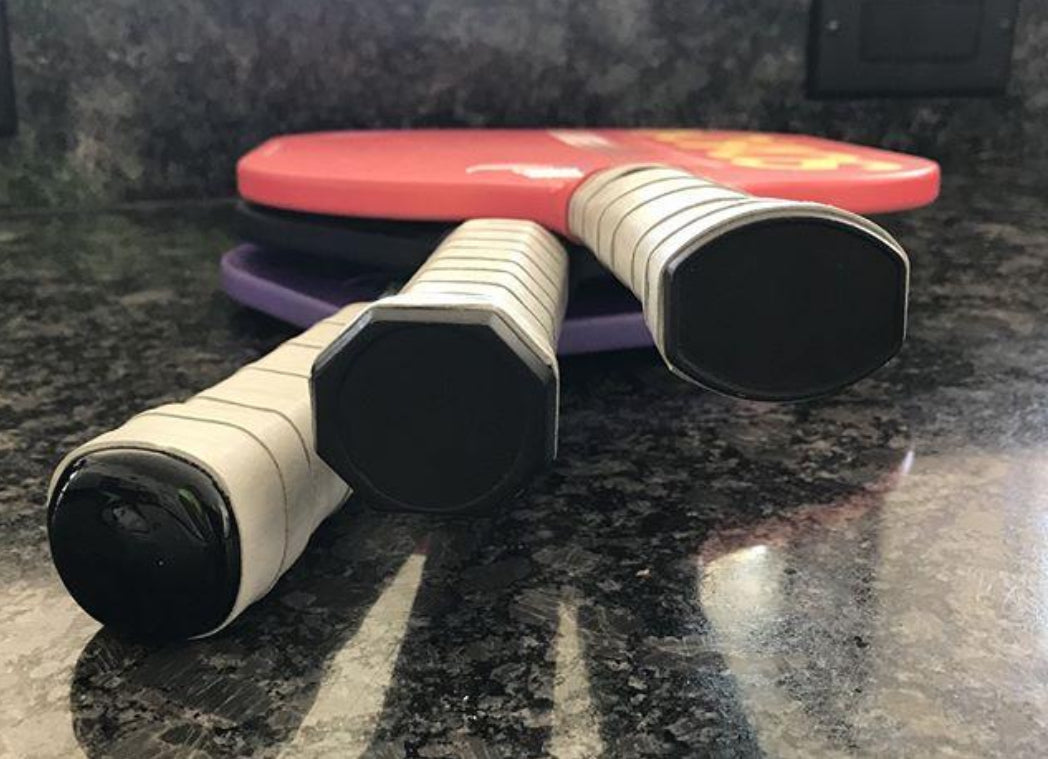When it comes to pickleball, most players focus on paddle weight, core material, or surface texture. But one often-overlooked factor that can significantly impact your game is the grip shape. The way you hold your paddle affects your control, power, comfort, and even injury prevention.
In this post, we’ll break down different pickleball grip shapes, how they influence play, and how to choose the best one for your needs.
Why Grip Shape Matters
Your grip shape determines how comfortably and securely you can hold the paddle. It influences:
Control: A well-fitting grip shape improves precision and maneuverability.
Power: The right grip can help you generate more force in your shots.
Comfort: Avoiding hand strain ensures better endurance during long matches.
Injury Prevention: A poor grip can lead to wrist pain or tennis elbow over time.
Common Pickleball Grip Shapes
1. Octagonal Grip (Tennis-Style Grip)
Shape: Similar to a tennis racket, with eight beveled edges.
Best For: Players transitioning from tennis or those who like a solid grip with clear finger placement.
Pros:
Provides a natural feel for tennis players.
Helps with spin and control due to precise finger positioning.
Reduces twisting on impact.
Cons:
Might feel rigid or unnatural for players used to a rounder grip.
2. Rounded Grip
Shape: A more cylindrical or oval shape with smoother edges.
Best For: Beginners or players who prefer a relaxed, comfortable grip.
Pros:
Feels more ergonomic for some players.
Allows easy grip changes between shots.
Comfortable for long play sessions.
Cons:
Can be harder to maintain consistent finger placement.
May lead to paddle twisting on off-center hits.
3. Rectangular or Squared Grip
Shape: More angular, with flat sides and rounded corners.
Best For: Players who want extra grip security and control.
Pros:
Reduces paddle rotation in the hand.
Ideal for players with strong, firm grips.
Helps with stability on hard shots.
Cons:
Less natural for quick grip adjustments.
Can feel bulky for some players.
4. Ergonomic (Contoured) Grip
Shape: Designed to fit the natural curves of your hand, often featuring a slightly molded or tapered shape.
Best For: Players seeking maximum comfort and reduced hand fatigue.
Pros:
Reduces grip pressure, preventing strain.
Promotes a relaxed grip for soft shots and dinking.
Cons:
Might not be ideal for players who frequently switch grip positions.
Less commonly available on standard paddles.
How to Choose the Right Grip Shape
1. Consider Your Playing Style
If you rely on spin and precision, an octagonal grip might suit you best.
If you favor power and stability, a rectangular grip can provide better control.
For versatility and comfort, a rounded or ergonomic grip might be ideal.
2. Think About Your Hand Size
Players with larger hands may prefer a more angular grip for better leverage.
Players with smaller hands might find a rounded or contoured grip more comfortable.
3. Try Different Grips
If possible, test different paddles and grip shapes before committing.
You can modify your paddle’s grip with overgrips or replacement grips to fine-tune the shape.
Final Thoughts
The right grip shape can make a big difference in your pickleball performance. Whether you prefer a tennis-style octagonal grip, a soft ergonomic feel, or a squared-off power grip, choosing the best option for your hand and playstyle will help you stay comfortable and in control on the court.
Experiment with different shapes, listen to your hands, and find what works best for you. After all, the right grip is the foundation of a great game!
Have you found your ideal pickleball grip shape? Share your thoughts and experiences in the comments!

